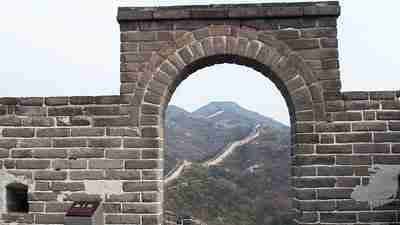The initial news reports by journos accompanying Prime Minister Manmohan Singh to China in October 2013 about India “talking tough” or the bonhomie at the banquet hosted by Chinese Premier Li Keqiang with old Hindi films hit songs like ‘Mera naam chin chin choo’ etc, obviously could not be taken too seriously. Because a close look at the Border Defence Cooperation Agreement (BDCA) reveals its sheer ambiguity that ties India into knots. The fact that such an agreement got signed by India only further confirmed the Indian government’s utter incapacity in dealing with the Chinese.
Analyses by a cross-section of China watchers brings out how brazenly the clauses in the articles of this agreement have been inked by China and how they will further confuse Indian Army / Indo Tibetan Border Police/any other force’s personnel deployed on the 4057 kms long Line of Actual Control (LAC). Such confusion for personnel already operating in a very exacting environment of trying to constantly talk/convince belligerent Chinese troops at every incursion of the variedly ‘perceived’/ disputable LAC, will inevitably lead to loss of morale.
China and its lopsided view
Some comments by experts on China, who this writer interacted with are downrightly disturbing. Lt Gen (retd) Prakash Katoch: “Li Keqiang’s googly dealt to Manmohan Singh, who… swallowed it hooks, line and sinker and shocked even veteran diplomats, is another massive foreign policy failure that history will not forgive this government for”.
Mr Jayadeva Ranade, Member, National Security Advisory Board, former Additional Secretary in the Cabinet Secretariat, Government of India, expressing his personal view, feels uneasy about the new feature in Article VI, as does Katoch.
He said that the clause, “…the two sides agree that they shall not follow or tail patrols of the other side in areas where there is no common understanding of the LAC in the India- China border areas” will “leave Indian troops very ambiguous about the manner of responding to an intruding patrol” Ranade is also apprehensive about Chinese army distancing itself from the BDCA and also that there is no mention of the Brahmaputra (Yarlung Tsangpo) river in the river management issues. He added that the government-owned think-tank Chinese Academy of Social Sciences recommended that China ignore India’s protests and go ahead with the project to divert the river.

Dr Swaran Singh, School for International Studies, Jawaharlal Nehru University, could not help quipping, “It was a good farewell summit to an elderly statesman from emerging young leaders of China-high on personal gestures and low on substances… the Indian PM also played to the tune by emphasizing on futuristic strategic issues of Sino-Indian relations… The economic deficit was not touched at all”.
The already existing agreements between India and China are:
- Maintenance of Peace and Tranquility along the LAC in the India-China Border Areas signed on 7 September 1993;
- Agreement on Confidence Building Measures in the military field along the LAC in the India-China Border Areas;
- The Protocol on Modalities for the Implementation of Confidence Building Measures in the military field along the LAC in India-China Border Areas signed on 11 April 2005 and
- The Agreement on Establishment of a Working Mechanism for Consultation and Coordination on India-China Border Affairs signed on 17th January 2012.
All these have been violated not only in the Eastern segment of the LAC- in Sikkim and Arunachal Pradesh- but also repeatedly in the Western segment’s Eastern Ladakh since 2010 at least. And that too where Chinese and Pakistani forces are in close proximity and have been exercising together. What then can be the future be for India after it has signed on the dotted line of a BDCA, seemingly deviously devised by China?


